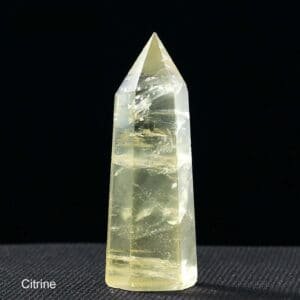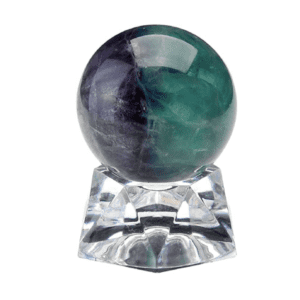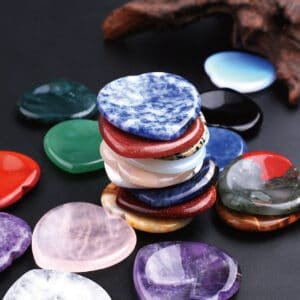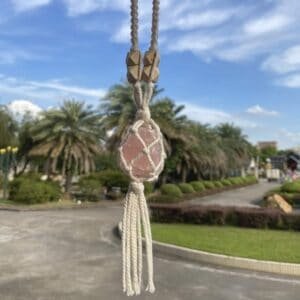If you believe in the power of energy crystals and ores and wish to use them to adjust your body and mind, you need to understand the difference between natural crystals and artificial quartz. However, if it’s just for viewing, it’s another matter.
Nine Rules of Judgment
When choosing semi-gemstones, we can use simple methods to reduce the probability of buying artificial products or artificially processing ores. Let me tell you a few small methods that can be used immediately.
1. Find a store with a reputation
I am unsure whether I can completely buy natural healing stones, so it is best to choose a reputable store. Professional companies that pay attention to brands have professionals and equipment for the first inspection step. These stores are more afraid of buying fake products than you because once their reputation is damaged, it will cause great harm. It is also my first choice to purchase crystals. After all, artificial optimization and artificial crystal technology are changing with each passing day and progressing rapidly.
2. Hardness
The hardness of different ores is also different. For example, the hardness of a diamond is 10, the hardness of quartz (crystal) is 7, and the hardness of glass is 5.5. If the crystal and glass are rubbed, the glass will be damaged, and it is easy to tell whether it is fake. However, the temperature and structure of human-made crystals are consistent with those of natural crystals, so it isn’t easy to distinguish them in this way.
3. Color banding or chromatic aberration
Natural-colored crystals usually have chromatic aberration and color bands. Chemical elements will be unevenly distributed in the crystal, resulting in color differences. For example: if we place natural citrine in water, we can see the color band clearly, and its color is uneven. It is absolutely uniform in color if it is artificially optimized heat-treated citrine. Also, color bands can be seen clearly from bottom to top by a high-brightness or LED flashlight. So I recommended carrying a LED flashlight with you when purchasing crystals.
4. Birefringence
Natural crystal balls can be viewed in a way that is birefringent. Take a piece of white paper, put a hair on it, and then turn the crystal ball. Through the natural crystal ball, you can see that the hair is sometimes separated (it looks like two hairs), and sometimes it is closed (it turns back into one strand). It is the effect of birefringence. Glass spheres have no birefringence. However, this method is rarely used now because the composition and structure of artificial crystal balls are almost the same as natural crystal balls.
5. Natural ice cracks, stone patterns
Natural stone usually has natural ice cracks, stone patterns, or color bands, so if you see a product with a specific volume that is entirely transparent and flawless, the probability of being artificial is higher than that with ice cracks. But recently, many manufacturers will dye high-grade ore with low-grade miscellaneous stones, so it cannot be judged by this method.
6. Mineral Symbiosis and Inclusions
The probability of counterfeiting gemstones with mineral symbiosis is relatively low. The most familiar green rutilated quartz is the symbiosis of quartz and actinolite. Black rutilated quartz is the symbiotic of quartz and black tourmaline. Green ghost is the symbiotic of quartz and chlorite. Every crystal with symbiotic mineral inclusions in the world is unique; because of this, there is almost no counterfeiting.

7. Price
As the saying goes, you get what you pay for, and if beautiful and perfect high-grade crystal gemstones sell too much below the market price, then there is a problem.
8. Intuition
It does not refer to the hot and tingling sensation of crystal energy or the attraction feeling when two crystals are rotated close to each other. If you feel weird or have unreasonable doubts when buying, you should observe more and believe that your intuition can help you judge.
9. Feeling
If you get in touch with natural healing stones a lot, remember their feel, and leaving sensory memory due to long-time contact is also a good way. A simple way to judge is that after the natural crystal is heated, it will be utterly cold within 30 seconds without leaving any residual temperature. But this is a phenomenon caused by specific heat, and the artificial crystal or glass should have the same effect, so it is still necessary to use other identification methods to identify.
Natural Crystal vs. Man-made Crystal
Natural crystals are mineral crystals that are naturally formed underground. Usually, the crystals take millions of years to grow a few centimeters (about 0.5 millimeters a day, which is the standard that can only be achieved when the natural environment fully meets the growth requirements. Therefore, geological spectra usually use millions of years as a unit). Geological softness and texture will also affect the length and structure of the crystal. Also, because it has been buried underground for tens of millions of years, the crystal veins continue to resonate with the energy deep in the earth, and the crystal quality is stable so that it can be used as a healing stone.
Machines quickly compress artificial crystals to imitate the pressure and heat of the ground in a scientific laboratory. They can grow about 0.8 mm a day. Therefore, the machine can complete a crystal ball with a diameter of 3 cm in only 35 days. Thus, the price is very low, not as expensive as natural crystals, and if they are counterfeited, they can obtain huge profits. Artificial crystals usually have no inclusions and few ice cracks. They are spotless and thorough, but in terms of energy, they do not have the stable energy frequency of natural crystals cultivated underground. Many people will sell artificial crystals as perfect crystals, that is, crystals with no visible flaws. The price is higher than ordinary natural crystals, but many consumers think they have picked up a bargain.
Common manual optimization methods
1. Bleaching
Optimization method: Use chemical agents to lighten and remove the spots or variegated colors on the ore, usually using strong acid or alkali. Such a process may cause some ore components to be removed and create gaps, which need to be filled with jelly. This method is still controversial until now, and it isn’t easy to judge with the naked eye. Many jadeites on the market have been plasticized by this method.
Disadvantages: The use of strong acids and alkalis may destroy the content of the ore, and many chemical elements will also be removed, which may change the energy structure, and after pouring into the plastic solvent, the energy will not be able to flow smoothly, making the healing effect worse.
Common ores: jadeite, flash jade, etc.
2. Dyeing
Optimization method: use chemical agents or oils containing coloring agents, put ores into it, and use the cracks and absorption of the ores themselves to change the color. It is a very common optimization process. Some manufacturers even dye some ores and sell them at high prices than other ores. Consumers should be cautious.
Some merchants will also use the principle of heating or cooling to cause the inside of the quartz crystal or other ore to be compressed, ruptured, and dyed. This method will also damage the healing stone itself. If you use intense light (such as an LED flashlight), you may see the darkest color where the colorant has penetrated or unnatural color halos such as ink and ink scattered. This artificial optimization process may also be active after certain chemicals or prolonged exposure to sweat or seawater, and the color may fade.
Disadvantages: Natural stone may be broken under pressure during the growth process, but there is a chance to repair and regenerate in the earth. But artificial destruction can’t recover energy. The dyes are usually chemically synthesized, with toxicity and negative energy, and being attached to the ore has no benefit for the healing work.
Common ores: jadeites, agate, chalcedony, turquoise, lapis lazuli, emerald, etc.
3. Plastic/Wax Impregnation
Optimization method: Fill the gaps of the ore with plastic or resin through high-temperature pressurization so that the gap can be filled to increase the weight and appearance integrity, making the color of the ore much deeper.
Disadvantages: After being filled with plastic, the energy frequency vibration will be greatly reduced, causing the healing stone to lose its original energy.
Common ores: jadeites, malachite, etc.
4. Heat Treatment
Optimization method: Use high-temperature treatment to change the chemical elements in the ore to deepen or change the color and increase the aesthetic value. The four optimization treatments mentioned above must be assisted by heat treatment. After heat treatment, the ore will lose its color difference, and the whole ore will be uniform and can be identified under strong light. When the ore is formed, it is also subjected to natural heat treatment of geothermal heat. If it is heat treatment only, the damage to the ore will be less.
Generally, ruby sapphires are artificially heat-treated to melt the impurities in the gemstones and make the color more obvious. This method was recognized internationally a long time ago.
Disadvantages: Artificial heat treatment will strongly destroy the changes in the chemical elements of the ore itself and change the energy.
Common ores: ruby sapphire, amber, tourmaline, aquamarine, amethyst, tiger’s eye, citrine, etc.
5. Irradiation
Optimization method: use radiation’s effect to change the ore’s chemical elements and make it change the color. It is also common to use heat treatment after irradiation to change or deepen the color; both methods can make a massive difference in the ore. However, this treatment method will make the color of the whole ore change evenly, and the color difference cannot be seen. It can only be seen in strong light or identified by analyzing the radiation through a spectral analysis instrument.
This method is generally used on rose quartz to deepen the color of pink crystals, and it can also be used on colorless diamonds to increase the color of colorless diamonds. After turning into colored diamonds, the price can often be greatly increased.
Disadvantages: Radiation can drastically change the chemical elements, causing the structure of the ore to be damaged, making the energy unstable and unable to heal smoothly.
Common Minerals: Quartz Crystal, Diamond, Tourmaline.
Now it’s your turn
Thank you for reading. I wish you can benefit a lot from my post. You can share your opinions or stories with us, we can discuss them together to help you find the right solution.
I’m Alice, the founder of Dglife Store, we are the best healing crystals supplier in China. If you need any help with purchasing healing crystals, feel free to contact us or order on our website directly.












